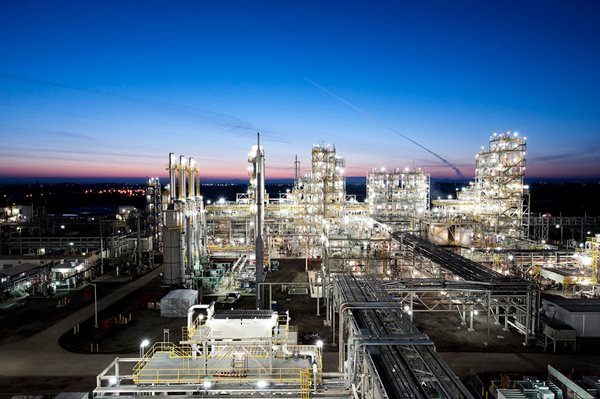Battery materials startup Group 14 Technologies brought its first commercial-scale factory online in the northwest United States. The factory can produce up to 120 tons per year of the company’s lithium silicon-carbon material SCC55, designed as a replacement for graphite in lithium-ion batteries.
Since it has around 10 times the energy density of graphite, silicon has attracted plenty of attention from researchers as a potential anode material for lithium-ion batteries. Challenges with the material’s tendency to expand when used in battery, however, have largely held back commercial applications until now.
Group 14 said that by focusing on large-scale solutions from the start it has been able to design a material that can both be produced at large-scale and serve as a “drop in” solution for battery manufacturers already working with graphite.
“We leveraged our team’s deep commercial manufacturing experience to prioritize process development and designing for cost from the beginning,” said CTO Rick Costantino. “The process to manufacture SCC55 was designed from the start to be scaled quickly and efficiently, an approach that has kept us on track to bring our technology online to help power consumer electronics, electric vehicles and more.”
The material consists of a carbon “scaffold,” inside which is a 3-5 nanometer particle of amorphous silicon. Void space inside the scaffold gives the silicon some room to expand, while the carbon surface creates a stable interface with the electrolyte.
Batteries using only SCC55 as the anode have shown stability over more than 500 cycles. It can also be combined with graphite in various ratios for stability over 1,000-2,000 cycles, with customers able to find the optimal balance.
“We have a lot of customers looking at the blending approach, and others also working only with our material to get a 50% plus boost to their battery capacity,” Group 14 CEO Rick Luebbe told pv magazine.
Group 14 did not share information on the cost of its material, although it said it will be competitive with graphite when the improved performance is taken into account.
This content is protected by copyright and may not be reused. If you want to cooperate with us and would like to reuse some of our content, please contact: editors@pv-magazine.com.









Price, weight and longevity will be the real test of future batteries. For static battery packs, for homes, this could be an alternative since weight is not a problem but long life is the game changer. Now if they can get it under $100.00 per kilowatt like lead acid batteries, this will make the home storage and microgrid systems a more viable solution.
I’ll just keep leaving this comment regarding any battery article until writers feel like writing proper articles.
For articles regarding batteries, here are useful battery metrics:
1. Energy density per weight, in Wh/kg.
2. Energy density per volume, in Wh/L.
3. Power density per weight, in W/kg, for both optimal lifespan and for maximal power delivery.
4. Power density per volume, in W/L, for both optimal lifespan and for maximal power delivery.
5. Time to charge to 80% and to 100%, in minutes.
6. Temperature range of operation, in Celsius.
7. Number of complete charge-discharge cycles it can withstand before dropping below 80% of its original capacity.
8. Percentage of stored energy lost when not in use.
9. Cost per kWh.
10. Materials contents, including information regarding flammability, toxicity, and anticipated recyclability issues.
If the article cannot provide these metrics, the article is premature.
Those are all useful metrics; thank you for the list!